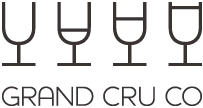- Details
- Written by Henry Conway
- Category: News
- Hits: 1465
Amazon Wine to close by end of year – reports
Amazon Wine has been running for about five years, allowing wineries and suppliers to sell wines through Amazon.com.
But, in an email to Amazon Wine sellers, which has been widely reported by media outlets, the company stated that ‘as Amazon continues to offer customers additional retail options for buying wine, we will no longer offer a marketplace for wine at this time, and Amazon Wine will close on December 31st, 2017′.
According to TechCrunch, the statement added, ‘Wine will continue to be offered through Amazon Fresh, Prime Now and Whole Foods Markets.’
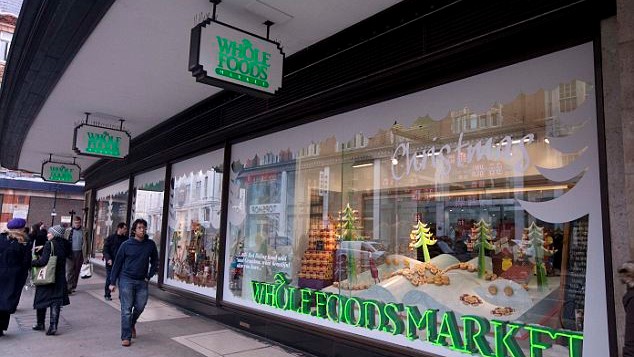
A spokesperson for Amazon could not be immediately reached for further comment.
Earlier this year, Amazon bough organic food retailer Whole Foods, which also sells wine. Amazon Fresh and Prime Now are both grocery delivery services from Amazon, which include wine and beer. The market for on-demand food and drink delivery has become increasingly competitive in the past couple of years, with Deliveroo and Uber also expanding to wine, beer and spirits.
Earlier this year, an Oregon wine estate developed a wine ‘from conception to release’ with Amazon Wine – although Amazon cautioned that it had not been directly involved with developing the brand. Its job was to provide wines with a platform to sell from, it said.
Online marketplace eBay launched into wine retail in 2016 in 45 US states, and earlier this year that it would add another 1,000 wines to its lists in the UK via a deal with WineDirect.
World wine production plummets to 1960s levels
Wine lovers may have to pay more for some of their favourite bottles as new figures show world production has sunk to 'historic lows', after severe frosts and heatwaves curtailed 2017 yields in France, Spain and Italy.
Small harvests in Europe’s main producing countries mean that world wine production has sunk back to levels barely seen since the 1950s and early 1960s, the International Organisation of Vine and Wine (OIV) said. It estimated that global production would hit 246.7 million hectolitres in 2017, equivalent to 24.67 billion litres, down by 8% versus 2016.
Severe spring frosts and a spike of hot weather dubbed the ‘lucifer heatwave’ mean that Italy is facing its smallest harvest for 60 years and France is expected to produce one of its lowest grape hauls in the post-Second World War era.
Spain and Germany are also expected to see harvests shrink, although the US is expected to produce the same as last year – despite the recent fires in California wine country.
Italy, France and Spain are the world’s biggest three wine producing nations and these three expected to register declines of 23%, 19% and 15% respectively on last year, to 39.3, 36.7 and 33.5 million hectolitres.
The OIV’s warning follows on from global wine production hitting a 20-year low in 2016, with Argentina and Chile suffering from the effects of El Niño that year. Historically low harvests have raised the question of price rises for wine lovers.
Analysts at Rabobank said that they expected global wine stocks to ‘dramatically tighten’, which would exacerbate rising prices for wine shipped in bulk – generally sold at the lower end of the price ladder. However, effects on price are difficult to predict and the weather has not distributed its wrath in uniform fashion across Europe’s vineyards.
Premium wines from the 2017 harvest will not be released for several months, and even years, in some cases. And a lot will depend on stock levels in different regions and appellations.
There is concern about the financial stability of producers in some regions, such as the Loire in France, which was hit hard by frost in both 2016 and 2017. Quantity is not everything and there has been early optimism around quality in several European regions.
Deadly wildfire ravages Spain and Portugal
Wildfires in winemaking areas of Portugal and northern Spain have claimed at least 45 lives and burnt through thousands of hectares of agricultural land, including vineyards and winery owners' homes in both Galicia and the Dão.
Six thousand firefighters have spent the past week fighting more than 65 fires across Galicia in Spain and central Portugal. The unfolding tragedy had claimed 45 lives by Wednesday this week (18 October) – 41 in central Portugal and four in Galicia, according to the BBC.
Portugal’s interior minister resigned this week and the country has declared three days of mourning.
Winds from Hurricane Ophelia fanned the flames, worsening the situation; just as high winds also proved a major problem for thousands of fire crews battling blazes in California wine country last week.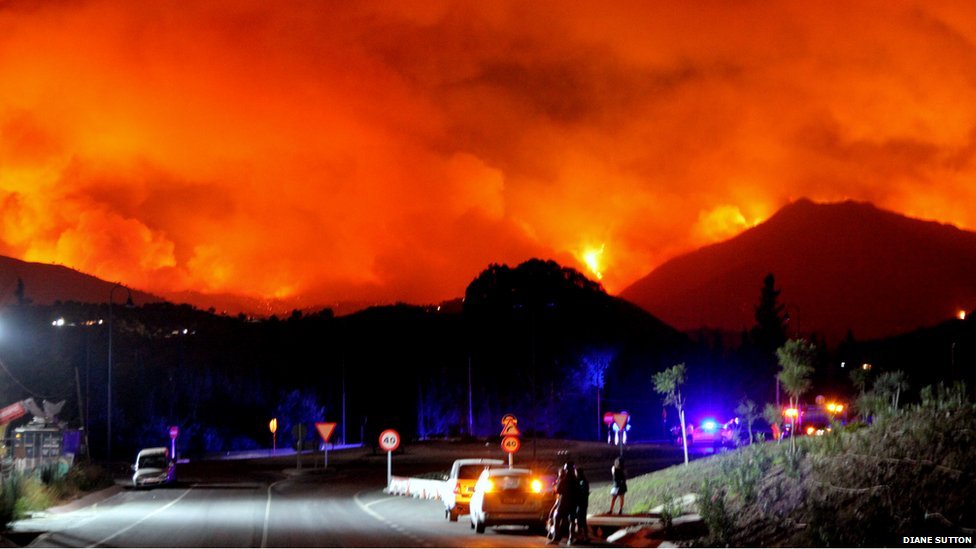
Several winemakers in Galicia and Dão found themselves on the frontline, like their counterparts in Napa and Sonoma.
‘From Sunday night to Monday there were terrible fires all over Portugal and particularly in the Dão region,’ local winemaker Luís Lourenço told reporters.
‘It was frightening because the wind was blowing in all directions, and it was almost impossible to control the fire. At Quinta dos Roques we are surrounded by pine forests, [and] some vineyards were ignited by the heat alone. I have about 12 hectares [out of 35] affected by the fires.
Sara Dionísio, owner of organic producer Casa de Mouraz in Tondela, Dão, said they lost vineyards, their home and a warehouse holding 100 pallets of wine. ‘It was all so fast,’ she said, who had been temporarily living elsewhere with her husband-winemaker Antonio, while their house was being refurbished.
‘During Sunday night we started to have winds faster than 100km/hour. We received a call that our vineyards were burning and Antonio went there with one of our employees to try to save part of the warehouse.
‘They stopped the fire in one part, but the other part completely fell down, landing on their heads. They went to hospital. It is a miracle that they are ok.’ It is understood that some family members of winery employees were among those who died in the area, although no further details were available at the present time.
The team at Casa de Mouraz managed to save the winery filled with the freshly picked 2017 harvest. They now hope that 2017 vintage sales will help fund rebuilding and replanting.
‘It is a complete tragedy and we have to talk about it, because we need to change our forest management in Portugal, especially considering climate change, so this doesn’t happen again,’ said Dionísio. In June, 64 people were killed in forest fires in Portugal.
In northern Spain, ‘the fires were very strong in Galicia and Asturias’, said Luis Bultron, president of Galicia’s winemakers’ association.
As Neves in Rías Baixas suffered the brunt of the fires. ‘Over 90% of the agricultural land in As Neves has been burnt, and somewhere between 15-20% of that is vineyards,’ consultant winemaker in the region, Jorge Hevella, told Decanter.com.
‘People have lost entire vineyards here, and their homes. It’s a barbarity; these fires were caused by arson. Some of the vines will never recover, and the land is still smouldering.’ It has not been proved that arson was the cause of the fires.
Bultron added, ‘Nobody can remember an October as hot as this year and the hot air, wind and dry land combined with the fires made it an apocalyptic scene. The nuclei of the fires was in urban areas in Galicia, and in the forests in Asturias. The fire was very close but fortunately relatively few vineyard regions were affected. The worst was Rías Baixas.’
Light rainfall since Monday evening has enabled fire crews to control the fires in northern Spain and Portugal, as producers and local wine associations begin to assess the damage.
- Details
- Written by Henry Conway
- Category: News
- Hits: 1351
We thought that as it's such an up and coming drink that we would get a little bit of something great to fill the gap. GIN! It would seen everyone absokutely loves this gorgeous drink so heres a couple of our current styles...
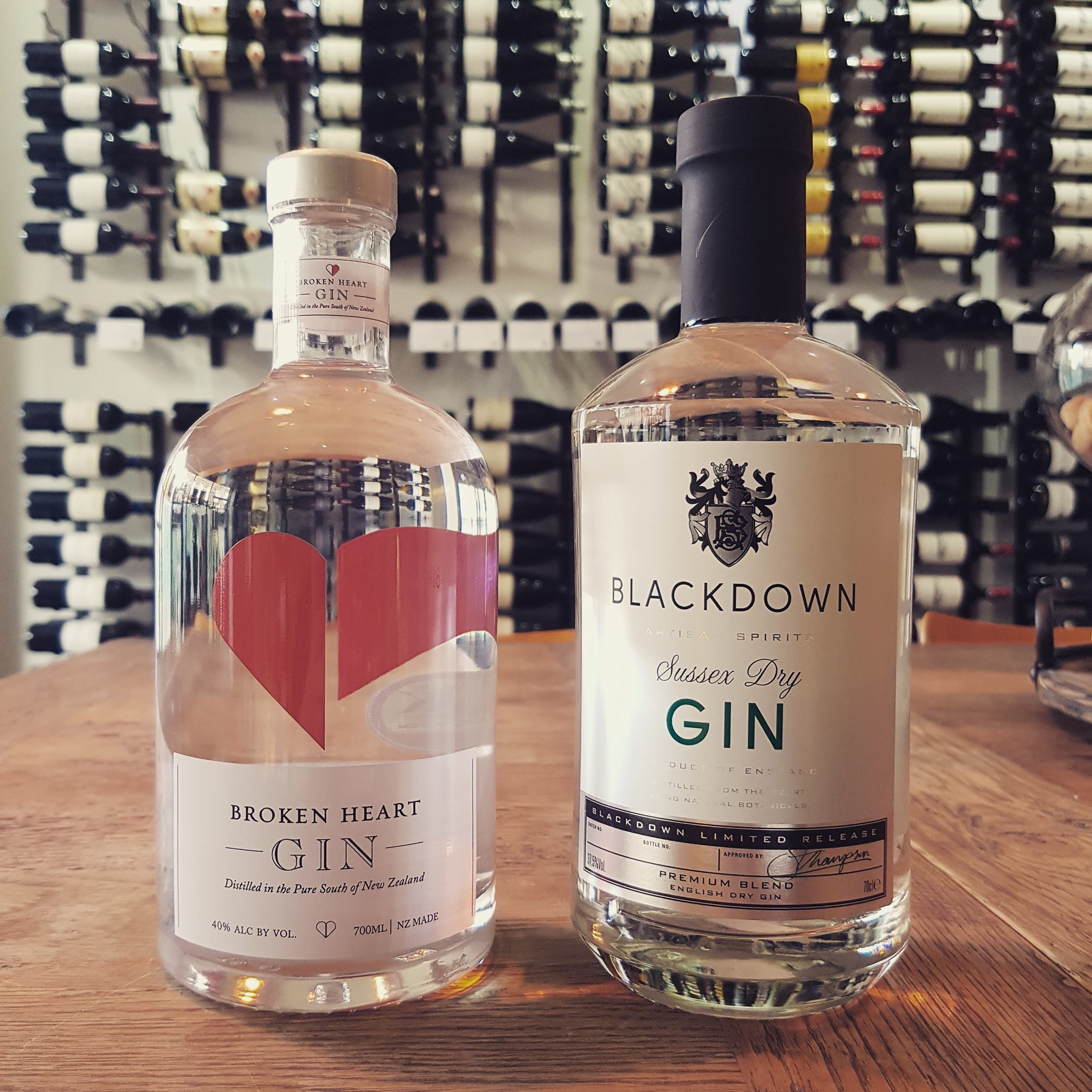
Blackdown Sussex Dry Gin @ £28.95
A clear, bright liquid. Delicate with a traditional woody aroma, the predominant notes are juniper, citrus, coriander and sweet Silver Birch sap. Full of flavour and slightly sweet, with a smooth and refined mouth feel.
Broken Heart, Central Otago Gin @ £35.95
The nose is piney as a result of the juniper. The added angelica gives this gin body and an earthy quality, which is complemented by pimento pepper. The gin strikes a fine balance, with the more delicate botanicals, such as lavender and lemon peel, ensuring smoothness. The finish is citrussy, clean and extremely well balanced.
Come and grab one, they've only been with us for a short time but they're already very popular!
Cheers!
- Details
- Written by Henry Conway
- Category: News
- Hits: 1343
It’s back to work for us here at Grand Cru Co and hopefully you’ve all had a good start to the week. We wanted to kick things off with a brand new offer which we have never done before…
For the immediate future, buy any one of the pictured bottles to get 2 free craft beers of your choice! There are 4 wines and 4 beers to choose from. We think it’s always good to broaden your horizons and what better way than to give craft beer a little nod.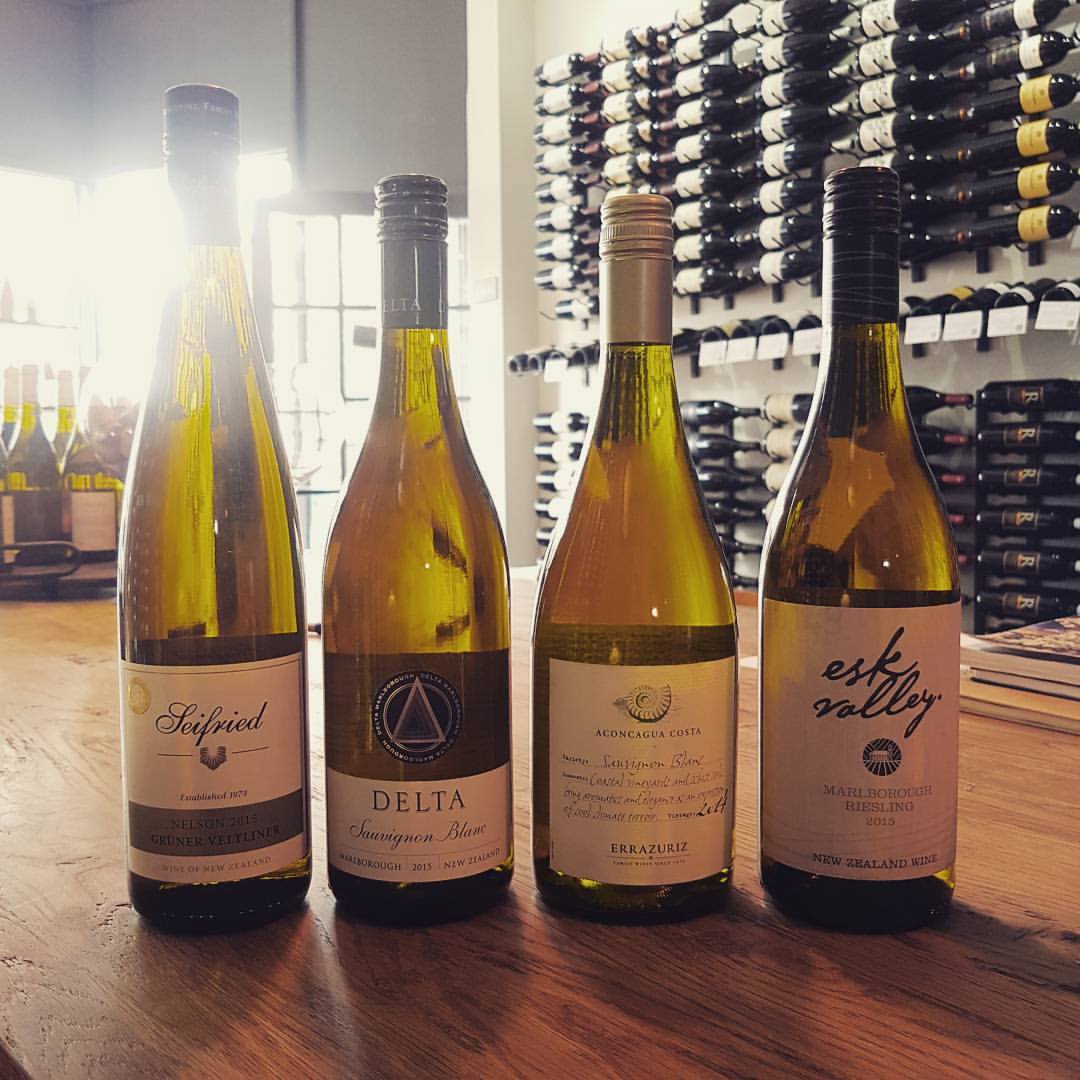
Esk Valley Riesling 2015
This is a dry style of Riesling which is versatile and suited to a wide variety of food matches or as an aperitif. It has classic Marlborough Riesling characters of peach, citrus and honey with a long refreshing finish.
Delta Vineyards, Sauvignon Blanc 2015
A wine with great concentration and a classic spectrum of flavour. It has a depth of blackcurrant notes and blackcurrant leaves on the nose with hints of peach and passionfruit. The palate is textural and mouthwatering with passionfruit and mineral flavours. Fresh acidity with underlying green herbal notes adds focus to the wine.
Errazuriz Aconcagua Costa Sauvignon Blanc 2014
Of a lovely pale yellow colour, with greenish reflections, the Aconcagua Costa single vineyard Sauvignon Blanc is elegant and austere. Citric aromas of grapefruit and lime laced with notes of passion fruit and subtle hints of herbs and a leafiness are predominant on the nose. This very big wine feels dry and edgy on the palate, with great acidity and a light mineral flavour that gives it nerve and freshness.
Seifried Estates Gruner Veltliner 2015
The nose is delicately fragranced with peppery characters, subtle spice and a twist of ginger. The palate has soft lemon/lime notes and a gentle phenolic and minerally backbone. The wine is dry and reveals an earthy mineral structure.
Come down and grab any of these to take advantage of this new deal. We aren’t even sure when it’s going to end so don’t miss out!
Cheers!
- Details
- Written by Henry Conway
- Category: News
- Hits: 1411
US re-kindles Canada wine dispute at WTO
US officials have re-started a dispute with Canada over what they see as unfair treatment of foreign wines in the country. They have lodged a second complaint at the WTO against Canada and its wine selling laws on 2 October.
They targeted British Columbia, a key winemaking region, and attacked a rule that says only wines from within the province can sit on ‘regular shelves’ in grocery stores. Imported wines must be sold in a ‘store within a store’.
Canada is the top export market for US wines, with shipments valued at US$431 million in 2016, according to wine industry figures. The US initially raised the issue with the WTO shortly before president Trump took office.
Its fresh complaint effectively re-starts the clock. It has requested a consultation period, and if granted would allow 60 days for both sides to discuss their differences at the WTO. If no solution is found, the issue may then go before a WTO panel.
The timing will raise questions about whether US officials are trying to ratchet up pressure amid ongoing talks on the North American Free Trade Agreement. US, Canadian and Mexican officials held talks in Ottawa, Canada, last week.
Nafta, and the 1987 free trade deal between US and Canada, has helped US wine exports significantly. Shipments to Canada were only worth $22.9 million 30 years ago.
Now, the US wine industry, led by Wine America and the California Wine Institute, argues that Canada’s wine industry has reached a point at which it no longer needs the trade protection that it has historically enjoyed.
However, the Canadian Vintners Association produced a poster recently to emphasise that Nafta ‘has been a gift’ for US wine and that jobs must be protected in Canada’s smaller wine industry.
Large Beaujolais estate sold after three centuries in same family
Château de la Chaize, one of the largest wine estates in Beaujolais, is changing hands after three-and-a-half centuries of being owned by the same family.
Château de la Chaize has been sold to Maïa Group, an independent French company specialising in infrastructure and real estate. A fee was not disclosed, but local newspaper Le Progrès said it was understood to be a record sum for a Beaujolais producer.
Situated in Odénas, in the Rhône department, La Chaize extends over 250 hectares, with 99 hectares in the Brouilly appellation. Those 99 hectares produce 8% of the total production of Brouilly, one of the 10 crus of Beaujolais. The Brouilly appellation is valued at €70,000 per hectare, but it was estimated that the whole deal could have reached tens of millions of euros.
‘We took a family decision to sell,’ Caroline de Roussy de Sales, estate manager and a member of the previous owning family, was quoted as saying in Le Progrès. She said that it was important to sell to somebody who wanted to develop the vineyards and invest.
Founded in 1670 by the seneschal of Lyon François de la Chaize d’Aix, the main Château de la Chaize building and gardens were completed by Jules-Hardouin Mansart and André le Nôtre, respectively architect and gardener of the Château de Versailles.
Christophe Gruy, Maïa group president, described the purchase as a ‘beautiful challenge’. He said that he wanted to convert the estate to organic viticulture.
Popping cork sound ‘makes wine taste better’ – experiment
People who drink wine after hearing the sound of a cork popping are likely to think it tastes better, suggests a small study conducted by an Oxford University professor. An experiment with 140 people in London found that the same wine can taste better if it follows the sound of a cork popping versus the noise made by someone releasing a screwcap.
Overall, the same wine was rated as around 15% better quality with a natural cork, according to the study.
The experiment was designed by professor Charles Spence, of Oxford University’s crossmodal research laboratory. Synthetic corks were not tested. It was held at an event also co-hosted by the Portuguese Cork Association, which is a strong advocate for natural corks.
‘The sound and sight of a cork being popped sets our expectations before the wine has even touched our lips, and these expectations then anchor our subsequent tasting experience,’ said professor Spence.
He has previously conducted research on the effects of music genres on wine taste and has also recently written ‘Gastrophysics: The new science of eating’. Several closure companies have invested in researching consumer psychology.
For example, synthetic cork producer Nomacorc demonstrated to journalists several years ago that it was researching how the length of time it takes to pull a cork impacted on a wine lover’s satisfaction with the product. There is fierce debate over closures in the wine world, with different markets preferring types.
Many Australia and New Zealand wine producers, for instance, are staunch supporters of screwap, which they have claimed is more consistent. Natural cork makers, meanwhile, claim that they have made significant progress to reduce the proportion of wines suffering from cork taint in recent years.
- Details
- Written by Henry Conway
- Category: News
- Hits: 1500
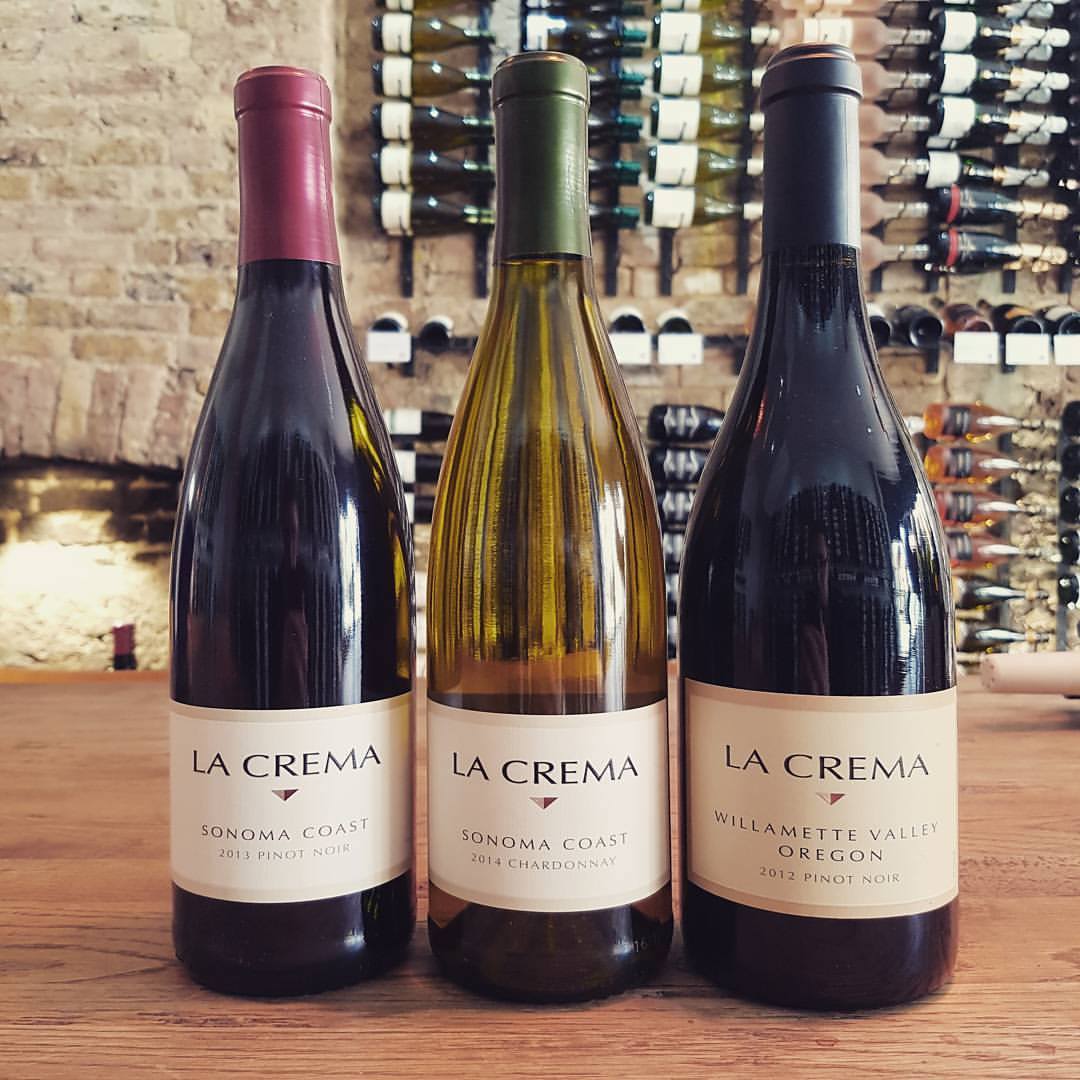
La Crema’s vineyards are all harvested by hand. The winemaking techniques are primarily traditional to ensure that the wines are true to both the variety and the terroir. The Chardonnays are whole-cluster pressed and fermented and aged in French oak on the lees with bi-monthly battonage to add texture and complexity. The Pinot Noirs are cold soaked for five to eight days before fermentation in small, open-top fermenters and aging in a combination of new and used French oak barrels. As with the Chardonnay, La Crema’s Pinot Noirs are pure, accurate and reflective of their origin. Winemaker Elizabeth Grant-Douglas joined La Crema as an enologist in 2001 and was named Winemaker in 2010. She was promoted to Director of Winemaking in 2013.
- Details
- Written by Henry Conway
- Category: News
- Hits: 1452
Popping cork sound ‘makes wine taste better’ – experiment
People who drink wine after hearing the sound of a cork popping are likely to think it tastes better, suggests a small study conducted by an Oxford University professor.
An experiment with 140 people in London found that the same wine can taste better if it follows the sound of a cork popping versus the noise made by someone releasing a screwcap. Overall, the same wine was rated as around 15% better quality with a natural cork, according to the study.
The experiment was designed by professor Charles Spence, of Oxford University’s crossmodal research laboratory. Synthetic corks were not tested. It was held at an event also co-hosted by the Portuguese Cork Association, which is a strong advocate for natural corks.
‘The sound and sight of a cork being popped sets our expectations before the wine has even touched our lips, and these expectations then anchor our subsequent tasting experience,’ said professor Spence. He has previously conducted research on the effects of music genres on wine taste and has also recently written ‘Gastrophysics: The new science of eating’.
Several closure companies have invested in researching consumer psychology. For example, synthetic cork producer Nomacorc demonstrated to journalists several years ago that it was researching how the length of time it takes to pull a cork impacted on a wine lover’s satisfaction with the product.
There is fierce debate over closures in the wine world, with different markets preferring types. Many Australia and New Zealand wine producers, for instance, are staunch supporters of screwcap, which they have claimed is more consistent. Natural cork makers, meanwhile, claim that they have made significant progress to reduce the proportion of wines suffering from cork taint in recent years.
New Cru Bourgeois classification on-track for 2020
Bordeaux's Cru Bourgeois classification is on-course to bring back a three-tier quality ranking in 2020, as officials say they are confident of avoiding a legal quagmire.
The Alliance des Crus Bourgeois du Médoc in Bordeaux has confirmed that in 2020 it hopes to reintroduce a classification system bringing back the three quality levels of:
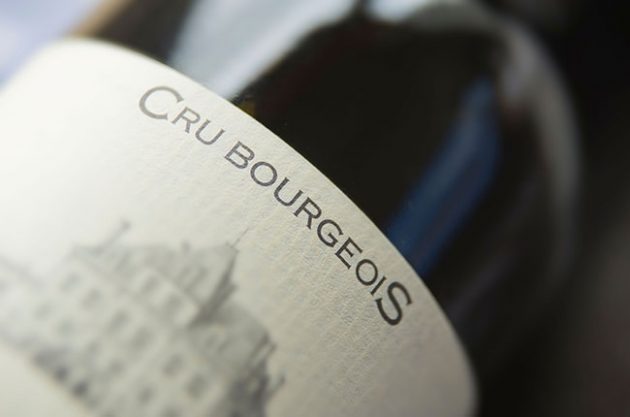
Cru Bourgeois
Cru Bourgeois Supérieur
Cru Bourgeois Exceptionnel
If approved by government ministers this year, the new system would technically be valid from the 2017 vintage, but not unveiled publicly until 2020, said the director of the Cru Bourgeois classification, Frédérique Dutheillet de Lamothe.
It will replace the current system, in place since the 2008 vintage release in 2010, where ‘Cru Bourgeois’ is effectively a quality seal given on a per vintage basis before bottling. The 2015 vintage selection has just been announced and includes 271 châteaux, seven fewer than for 2014, released last year.
Seventy eight percent of the 300 members of Alliance des Crus Bourgeois voted to restore the three-tier system at a recent AGM. But, the most pressing question for the organisers is how to avoid winemakers contesting any decisions through the courts, as has plagued the St-Emilion classification.
It was also legal challenges that resulted in the 2003 Cru Bourgeois classification being abandoned. It was declared officially invalid in 2007 and then replaced with the current system.
‘We will ensure impartiality at every step of the process,’ Dutheillet de Lamothe said. ‘We have proved we are able to do this effectively over the past eight years.
‘And we believe that making a classification that is renewable every five years instead of every ten will also help – producers will be given regular opportunities for promotion.’
Has a heatwave dented the California 2017 harvest?
Harvest is well underway in Napa Valley, California, but three days back in early September may prove the defining moment for the vintage, when temperatures up to forty-five degrees Celsius scorched the fragile young grapes.
‘I can’t remember a hotter weekend in September, and I’ve lived in Northern California my entire life,’ said Rob Davis, winemaker at Jordan Winery in Alexander Valley, Sonoma County.
The heatwave was the final event in a growing season defined by extreme, erratic climatic conditions. Winter saw heavy rainfall, while June met with an unexpected hail storm. But is the California 2017 vintage cooked?
Davis reported ‘minor sunburn’ on some Jordan Chardonnay grapes but added that most of his crop was back on-track after temperatures fell back. It’s worth noting that some winemakers had already harvested.
Down in Santa Barbara, winemaker Raj Parr said that for those who picked before last week’s heat spike, 2017 can actually be considered a cool vintage. But for those with grapes still on the vine—and that’s means the majority of Cabernet producers in Napa Valley—what is the prognosis?
It depends, ultimately, on the vineyard.
Dan Ricciato, who oversees vineyard operations for consulting winemaker Thomas Rivers Brown, said, ‘The final September heat really exposed weaknesses in specific sites that were laid out with disadvantageous row orientation, poor canopy management or general exposure issues. This was a great year to see which vineyards were farmed thoughtfully.’
Graeme MacDonald, who makes his MacDonald Cabernet Sauvignon from his family’s portion of the historic To Kalon vineyard, said that canopy management was essential, explaining that grape skins, like human skin, are prone to sunburn and need the shade of leafy canopies to prevent shrivelled skins, or stunted ripening and colour development.
While the vines were still affected by the heat, subsequent cool temperatures helped to temper the negative effects. But, he added, winemakers won’t have a definitive sense of the vintage until fermentation time. Many, like Doug Shafer of Shafer Vineyards, turned to irrigation to slake the thirst of vines parched by the heat.
He explained that the mild temperatures throughout the rest of September have been essential in preserving quality: while sugars rise during heat spikes due to dehydration, they go back down when mercury falls. The essential thing is not to panic and pick before the flavours have fully developed, he said.
‘Now everything is right on schedule, and it’s looking to be a good harvest,’ he added.
Grape grower Andy Beckstoffer agreed that although the heatwave stunted the vines early in the month, the fruit is now in good shape, the sugars well-developed, and the flavours continuing to mature. Some in California are used to strong fluctuations in temperature. Cain winemaker Chris Howell said, ‘Here on the coast, heatwave is an apt phrase, because the weather truly does come in waves.
‘First cool marine air builds up and washes over us, then as the cooling wave recedes, warm air returns from the interior. The cycle completes when the cooling breeze and fog return.’
Back in Napa Valley, Mike Dunn of Dunn Vineyards summed up the general sentiment succinctly when he said the subsequent ‘cooling off period will save the vintage’.
